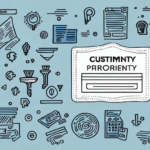Implementing and Managing Successful Referral Programs
In today's highly competitive market, businesses must continuously seek effective strategies to expand their customer base. One of the most impactful methods is through referral programs. These programs leverage the power of existing customers to attract new ones by offering incentives for successful referrals. This article delves into the intricacies of referral programs, from understanding various types and setting them up to measuring their success and avoiding common pitfalls. Let’s explore how to implement a referral program that drives growth and enhances customer loyalty.
Why Referral Programs are Essential for Business Growth
Referral programs are a cornerstone for business expansion due to their low cost and high impact. Referral marketing capitalizes on the trust customers place in recommendations from friends and family, which is often higher than the trust placed in traditional advertising. According to a study by Nielsen, 92% of people trust referrals from people they know, making it a highly effective strategy for customer acquisition.
Beyond customer acquisition, referral programs enhance customer loyalty. When customers refer others, they reinforce their own satisfaction with your products or services, fostering a deeper connection with your brand. Additionally, referral programs provide valuable insights through customer feedback, enabling businesses to refine their offerings and improve the overall customer experience.
Understanding the Different Types of Referral Programs
1. Incentive-Based Referral Programs
These programs offer rewards to customers for making successful referrals. Rewards can be monetary, such as discounts or cash bonuses, or non-monetary, like exclusive access to new products.
2. Gamification-Based Referral Programs
Incorporating game-like elements, these programs use badges, leaderboards, or reward points to motivate customers to refer more friends and family.
3. Hybrid Referral Programs
Combining features from incentive-based and gamification-based programs, hybrid programs aim to maximize engagement and participation by offering both rewards and gamified experiences.
4. Affiliate-Based Referral Programs
These programs provide commissions to customers or partners for driving sales or leads. Affiliates typically have their own platforms or networks through which they promote your business.
5. Community-Based Referral Programs
Focused on building a loyal community, these programs encourage customers to refer others through social media platforms or online forums, fostering a sense of belonging and mutual support.
6. Two-Sided Referral Programs
These programs reward both the referrer and the referred individual. For example, a ride-sharing service might offer discounts to both parties when a new user signs up.
Setting Up a Referral Program: Step-by-Step Guide
1. Define Objectives
Start by determining what you aim to achieve with your referral program, whether it's increasing sales, expanding your customer base, or enhancing brand awareness.
2. Choose the Right Type of Program
Select the referral program type that aligns with your business goals and resonates with your target audience.
3. Select Incentives
Decide on the rewards you will offer for successful referrals. Ensure that incentives are appealing yet sustainable for your business.
4. Implement Tracking Systems
Set up a reliable system to track referrals accurately. This could involve using referral software or integrating tracking features into your existing CRM.
5. Create a Dedicated Landing Page
Develop a landing page that clearly explains the referral program, making it easy for customers to participate and understand the benefits.
6. Promote the Program
Leverage various marketing channels, including email, social media, and your website, to promote your referral program effectively.
7. Monitor and Adjust
Regularly evaluate the performance of your referral program by tracking key metrics and making necessary adjustments to optimize its effectiveness.
Crafting an Effective Referral Program Strategy
Understand Your Target Audience
Tailor your referral program to meet the preferences and behaviors of your target audience. This ensures higher participation rates and more meaningful referrals.
Design Attractive Rewards
Choose rewards that provide genuine value to your customers. Whether it's discounts, free products, or exclusive access, the incentives should motivate customers to refer others.
Simplify the Referral Process
Make it easy for customers to refer others by providing clear instructions and minimizing the steps required to participate in the program.
Track and Analyze Results
Use analytics to monitor the performance of your referral program. Track metrics such as the number of referrals, conversion rates, and customer lifetime value to assess ROI.
Optimize Promotion Timing
Promote your referral program strategically, aligning with peak periods or special events to maximize participation and effectiveness.
Choosing the Right Incentives for Your Referral Program
Monetary Incentives
Offer discounts, coupons, or cash rewards to incentivize customers. Monetary incentives are straightforward and often highly effective.
Non-Monetary Incentives
Provide recognition, such as featuring referrers on social media or offering exclusive access to new products and services. These incentives can enhance customer loyalty and engagement.
Balancing Value and Effort
Ensure that the incentives are valuable enough to motivate referrals without imposing a financial strain on your business. Additionally, balance the effort required from referrers to ensure high-quality referrals.
Measuring the Success of Your Referral Program: KPIs to Track
Referral Conversion Rates
Measure the percentage of referrals that convert into actual customers to assess the effectiveness of your program.
Referral Traffic
Track the amount of traffic generated through referrals to understand the reach and impact of your program.
Lifetime Value of Referred Customers
Analyze the long-term value of customers acquired through referrals compared to those acquired through other channels.
Return on Investment (ROI)
Calculate the ROI by comparing the costs of the referral program against the revenue generated from referred customers.
Cost Per Acquisition (CPA)
Determine the CPA to evaluate the cost-effectiveness of your referral program and identify the most efficient referral sources.
Quality of Referrals
Assess the relevance and value of each referral to ensure that the program attracts high-quality customers who are likely to remain loyal.
Common Mistakes to Avoid When Implementing a Referral Program
- Choosing Ineffective Incentives: Offering rewards that do not resonate with your target audience can lead to low participation rates.
- Poor Referral Tracking: Inaccurate tracking can result in missed opportunities and incorrect reward distributions.
- Overloading Customers with Requests: Bombarding customers with referral requests can lead to annoyance and disengagement.
- Neglecting Program Optimization: Failing to regularly evaluate and adjust your program can hinder its effectiveness and growth.
How to Encourage Customers to Refer More People to Your Business
Create a Positive Customer Experience
Deliver exceptional customer service and high-quality products to ensure that customers are eager to recommend your business to others.
Offer Bonuses for Multiple Referrals
Provide additional rewards for customers who refer multiple people, incentivizing them to continue promoting your business.
Launch Referral Contests
Organize contests with grand prizes to encourage more referrals and create excitement around your referral program.
Provide Easy Sharing Tools
Equip customers with tools and resources that make it simple to share referral links via email, social media, or messaging apps.
Leveraging Social Media for Referral Programs
Promote on Social Platforms
Share information about your referral program across your social media profiles to reach a broader audience and encourage participation.
Create a Sense of Community
Use social media to build a community around your referral program by sharing success stories and engaging with participants through dedicated hashtags.
Engage Influencers
Collaborate with social media influencers to promote your referral program, leveraging their reach and credibility to attract more referrals.
The Role of Employee Advocacy in Referral Marketing
Encourage Employee Participation
Motivate employees to participate in the referral program by offering bonuses for successful referrals and providing them with the necessary tools and training.
Leverage Employee Networks
Utilize the social media networks of your employees to promote the referral program, expanding your reach and enhancing credibility.
Provide Training and Support
Ensure that employees understand the benefits of the referral program and are equipped to effectively communicate its value to potential referrals.
Scaling Your Referral Program for Maximum Impact
Partner with Complementary Brands
Collaborate with brands that complement your offerings to reach new audiences and enhance the effectiveness of your referral program.
Increase Incentives for High Performers
Offer higher rewards to customers who refer a larger number of people, encouraging them to continue their efforts and drive more referrals.
Optimize Referral Processes
Analyze referral data to identify and eliminate bottlenecks, improving the efficiency and scalability of your referral program.
Best Practices for Maintaining and Improving Your Referral Program Over Time
Regularly Review Program Data
Continuously monitor key metrics to assess the performance of your referral program and identify areas for improvement.
Solicit and Incorporate Feedback
Gather feedback from customers and referral partners to refine the structure and incentives of your program, ensuring it remains relevant and effective.
Stay Updated on Trends
Keep abreast of the latest trends and best practices in referral marketing to maintain the competitiveness and effectiveness of your program.
Iterate and Innovate
Continuously iterate on your referral program by testing new incentives, strategies, and technologies to enhance its impact.
Real-Life Examples of Successful Referral Programs from Top Brands
Dropbox
Strategy: Dropbox offered free storage space to both referrers and referees.
Outcome: This strategy led to an explosive growth from 100,000 to 4 million users in just 15 months.
Airbnb
Strategy: Airbnb's referral program provided a $25 discount to both the referrer and the new user.
Outcome: The referral program contributed to the company's user base growing from 2 million to 6 million in one year.
Conclusion: Why Every Business Needs a Successful Referral Program
Referral programs are an invaluable and cost-effective marketing strategy that can significantly accelerate business growth. By leveraging the trust and advocacy of existing customers, businesses can enhance brand awareness, generate quality leads, and drive sales without incurring substantial advertising costs. Implementing the strategies and best practices discussed in this article will enable businesses to create and maintain a successful referral program, ensuring sustained growth and customer loyalty over time.






















